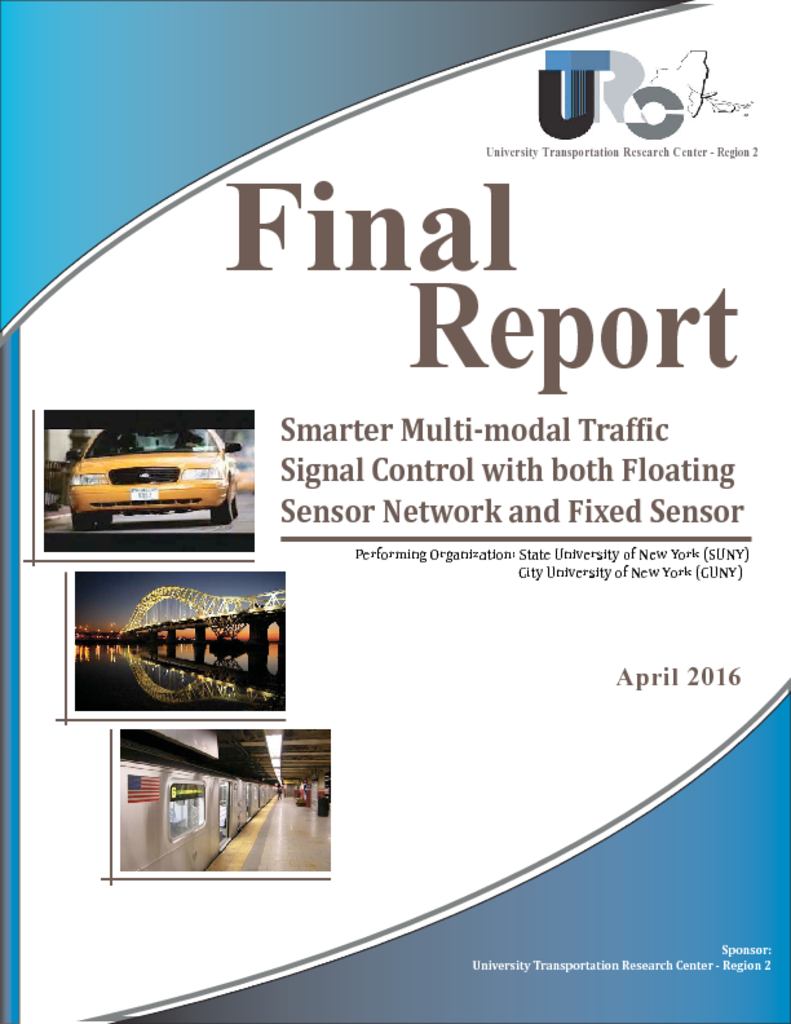The goal of this project is to develop a comprehensive framework with a set of models to improve multi-modal traffic signal control, by incorporating advanced floating sensor data (e.g. GPS data, etc.) and traditional fixed sensor data (e.g. loop detectors, etc.). In order to accomplish this goal, we completed five tasks. First, we conduct a comprehensive survey of transportation professionals, who can bring up existing state-of-practice, open issues and future challenges in multi-modal traffic signal control. This survey also identifies the weights of travel modes under different scenarios. Second, by leveraging floating sensors (smartphones), we develop an online travel model identification algorithm and a smartphone app to automatically recognize people’s travel modes, including passenger cars, transit buses, light rail as well as bicycles and pedestrians (including both jogging and walking). Third, by analyzing large scale of 15,000 fixed sensors (loop detectors) in a transportation network, we build a compression theory based approach to identify the spatial and temporal anomaly condition in the traffic network, caused by day-to-day commuting or traffic incidents. Fourth, by using multi-modal trajectory data, we develop multimodal signal control models with dynamic programming and leverage the results derived from previous tasks. Further, the proposed control model is evaluated by microscopic simulation VISSIM and externally developed signal control modules.




